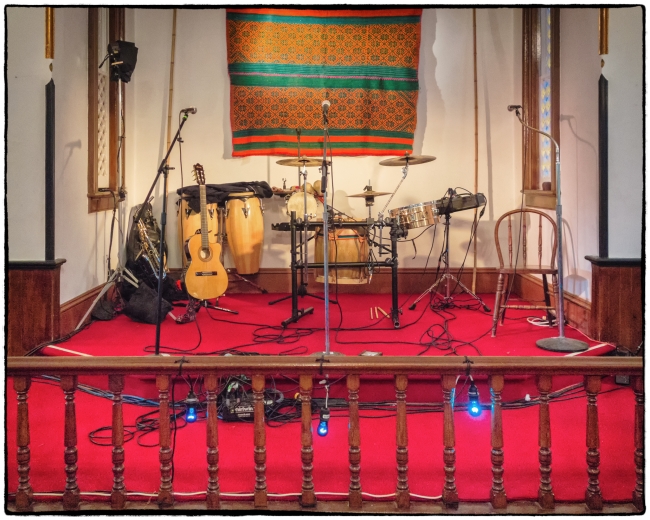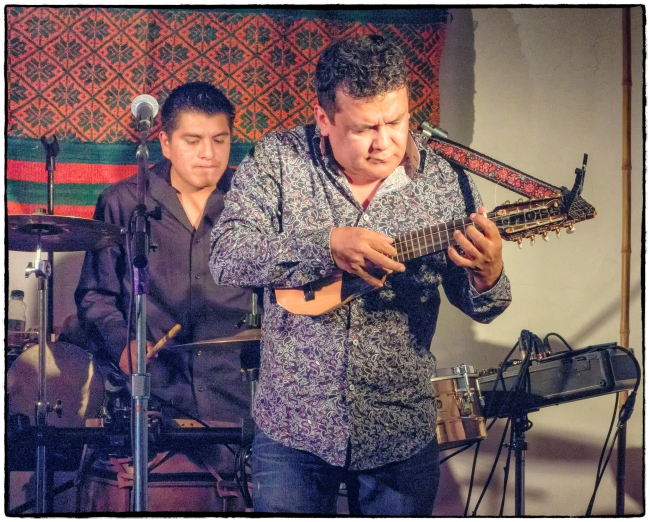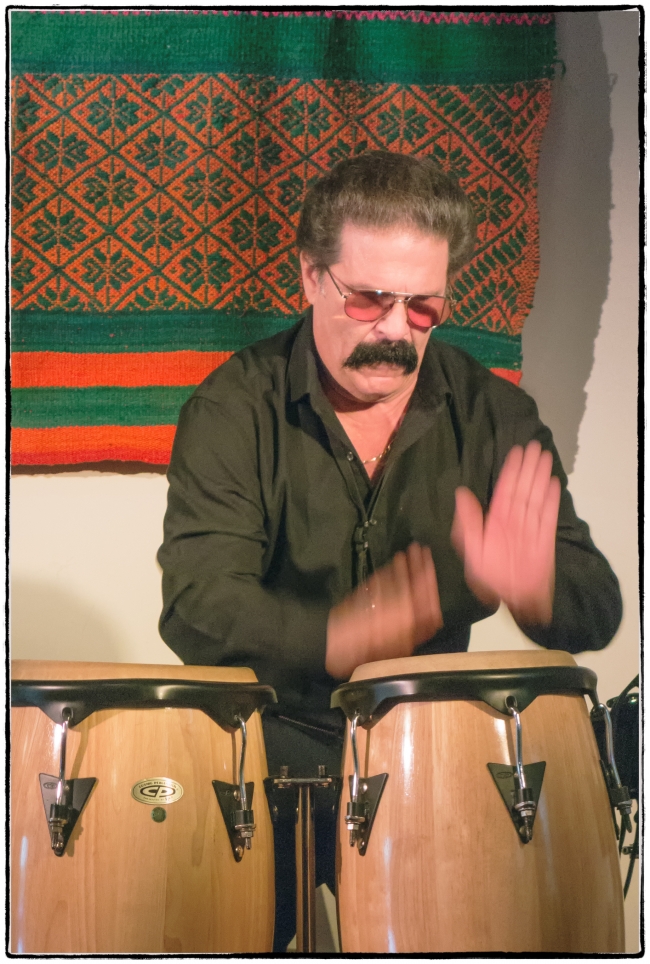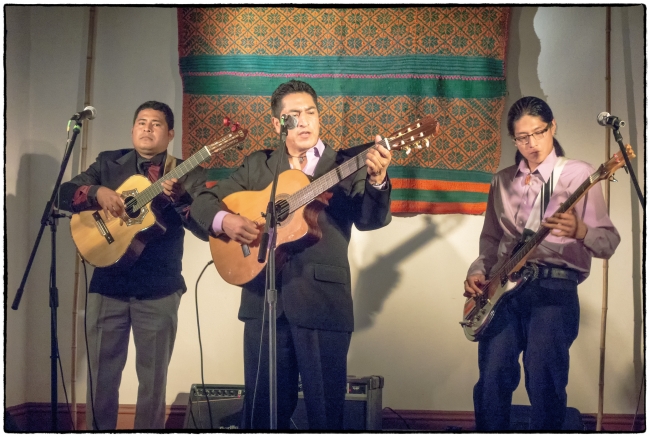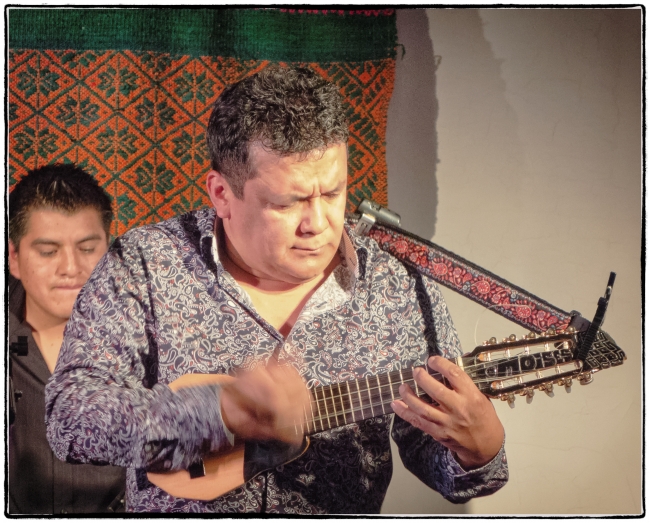The stage awaits the opening of the Latino Music Festival. Honorando los Laborodores (honoring the workers) at the Tompkins Corners Cultural Center. Sunday, October 16, 2016 featuring performers from a variety of countries.
I took the dog for a walk that day and ended up spending more time walking than I had anticipated. Consequently we missed the first half of the concert featuring: Juan S. and Roberto Verde. Music from Nicaragua, guitar and Mandolin; and Edwin Rodriguez y Los Caribeños de Puerto Rico. Puerto Rican music with bomba and plenas.
The second half began with Moises Salazar y su Charango. Peruvian music featuring charango, lutes, panpipes and guitar. According to Wikipedia:
The charango is a small Andean stringed instrument of the lute family, which probably originated in the Quechua and Aymara populations in post-Columbian times, after European stringed instruments were introduced by the Spanish in the times of the colony. The instrument is widespread today throughout the Andean regions of Ecuador, Bolivia, Peru, northern Chile and northwestern Argentina, where it is a popular musical instrument which exists in many variant forms.
About 66 cm long, the charango was traditionally made with the shell from the back of an armadillo (quirquincho, mulita), but also it can be made of wood, which some believe to be a better resonator. Wood is more commonly used in modern instruments. Charangos for children may also be made from calabash. Many contemporary charangos are now made with different types of wood. It typically has 10 strings in five courses of 2 strings each, but many other variations exist.
The charango is primarily played in traditional Andean music, but is sometimes used by other Latin American musicians. A charango player is called a charanguista.
The picture above shows Moises Salazar, the charanguista (obviously the star performer of this particular group) and the drummer. The group had a third member who played guitar and pan pipes. Mr. Salazar was a very energetic performer and we very much liked this segment of the concert. During a coffee break to allow the next act to set up, my wife bought a CD of their music.
Above, picture of Elliot Rivera from Puerto Rico – billed as “The Singing Sax”. Indeed, he did play the sax, briefly, a couple of times. But he mostly alternated between a bewildering array of percussion instruments – none of which he played particularly well (as was also true of his saxophone playing). He was, however, quite amusing – more of a comedian than a musician and the small crowd seemed to like him.
The final act was Grupo Sentimiento de Ecuador. To me they were the most professional of the three groups we saw. The gentleman on the left in the picture played the guitar well (at least as far as I can tell), but without any trace of emotion. His face stayed pretty much as you see it in the picture throughout the entire performance. At the end of their piece they seemed keen to leave, but the audience wouldn’t let them – forcing them to do a couple of encores.
Blazing fingers. Moises Salazar again, with a slightly closer view of his charango. Look at the concentration on his face.

